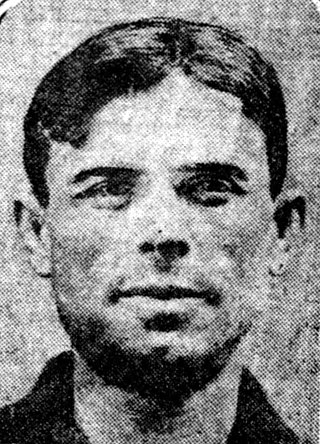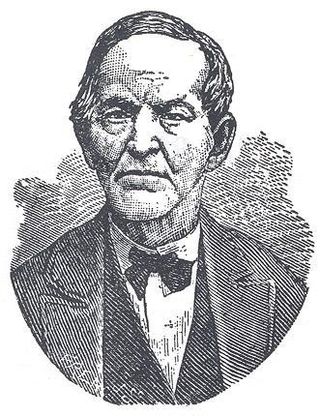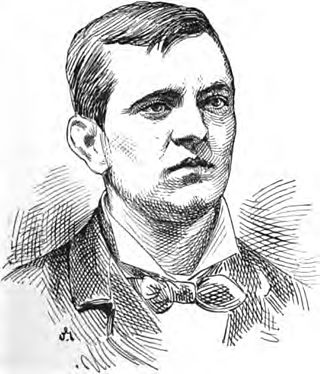
Sing Sing Correctional Facility, formerly Ossining Correctional Facility, is a maximum-security prison operated by the New York State Department of Corrections and Community Supervision in the village of Ossining, New York. It is about 30 miles (48 km) north of New York City on the east bank of the Hudson River. It holds about 1,700 inmates and housed the execution chamber for the State of New York until the abolition of capital punishment in New York in 1977.

May Ruth Snyder was an American murderer. Her execution in the electric chair at New York's Sing Sing Prison in 1928 for the murder of her husband, Albert Snyder, was recorded in a highly-publicized photograph.

Jack Black (1871–1932) was a Canadian-born American hobo and professional burglar. Black is best known for his autobiography You Can't Win, describing his days on the road and life as an outlaw. Black's book was written as an anti-crime book urging criminals to go straight, but it is also his statement of belief in the futility of prisons and the criminal justice system, hence the title of the book. Jack Black was writing from experience, having spent thirty years as a travelling criminal, and offers tales of being a cross-country stick-up man, home burglar, petty thief, and opium fiend. He gained fame as a prison reformer, writer and playwright. He disappeared in 1932 in a likely suicide.
The Bufalino crime family, also known as the Pittston crime family, Scranton Wilkes-Barre crime family, Northeastern Pennsylvania crime family, Northeastern Pennsylvania Mafia, or Scranton Mafia, was an Italian-American Mafia crime family active in Northeastern Pennsylvania, primarily in the cities of Scranton, Wilkes-Barre, and Pittston.

Decatur Dorsey was a Union Army soldier in the American Civil War and a recipient of the U.S. military's highest decoration, the Medal of Honor, for his actions at the Battle of the Crater. Born into slavery, Dorsey enlisted in the United States Colored Troops and served through the last year of the war.

The 1831 City Bank of New York theft took place on March 19, 1831, in New York City, New York, United States, when burglars stole $245,000 from the City Bank on Wall Street, using a set of copied keys. The theft is regarded as one of the first bank heists in U.S. history. The amount stolen would come to over $52 million in 2013 currency. Initial reports variously reported the name of the culprits as Edward Smith, Edward Jones, James Honeyman and James Murray. A modern source, drawing on period newspapers, fingers James Honeyman and William J. Murray.
Gerald Chapman, known as "The Count of Gramercy Park", "The Gentleman Bandit", and "Gentleman Gerald", was an American criminal who helped lead an early Prohibition-era gang from 1919 until the mid-1920s. His nicknames came from his ability to pose as a member of the wealthy elite, which allowed him to fool potential victims and avoid scrutiny from investigators. Chapman was the first criminal to be dubbed "Public Enemy Number One" by the press.

Sai Wing Mock was a Chinese-American criminal and leader of the Hip Sing Tong, which replaced the On Leong Tong as the dominant Chinese-American Tong in Manhattan Chinatown in the early 1900s.

Fredericka "Marm" Mandelbaum operated as a criminal fence to many of the street gangs and criminals of New York's underworld, handling between $1–5 million in stolen goods between 1862 and 1884. Like her principal rival John D. Grady and the Grady Gang, she also became a matriarch to the criminal elements of the city and was involved in financing and organizing numerous burglaries and other criminal operations throughout the post-American Civil War era.
"Dandy" Johnny Dolan was a New York City murderer and reputed leader of the Whyos street gang.

Robert John Kirby was the Warden of Sing Sing prison from 1941 until 1944. Highly regarded for his integrity, Kirby brought respect back to the administration of Sing Sing, and order to the prison after the often controversial tenure of Lewis Lawes.
The James V. Allred Unit is a prison for males located on Farm to Market Road 369 in Wichita Falls, Texas, United States, 4 miles (6.4 km) northwest of downtown Wichita Falls. The prison is near Iowa Park. The prison, with about 320 acres (130 ha) of land, is a part of the Texas Department of Criminal Justice Region V.

Sile Doty was an infamous robber, burglar, horse thief, highwayman, counterfeiter, and criminal gang leader. Stewart Holbrook says that Doty "was, before the James-Younger era, the most energetic and notorious all-around bandit in the United States." Doty's criminal career is known primarily through his autobiography, compiled by J. G. W. Colburn and published four years after Doty's death as The Life of Sile Doty The Most Noted Thief and Daring Burglar of His Time. As this title suggests, the tone of the autobiography is boastful and unapologetic. Doty excuses his crimes as stealing from the rich to give to the poor. Except where otherwise noted, what follows is taken from the autobiography and may contain exaggerations and self-serving distortions.

Sophie Lyons was an American criminal and one of the country's most notorious female thieves, pickpockets, shoplifters, and confidence women during the mid-to-late 19th century. She and her husbands Ned Lyons, Jim Brady and Billy Burke were among the most sought-after career criminals in the U.S. and Canada, being wanted in several major cities including New York City, Philadelphia, Boston, Detroit and Montreal from the 1860s until the turn of the 20th century.

Patrick Conway, commonly known by his alias Patsy or Patsy Conroy, was an American burglar and river pirate. He was the founder and leader of the Patsy Conroy Gang, a gang of river pirates active on the New York waterfront in the old Fourth Ward and Corlears' Hook districts during the post-American Civil War era.

Michael "Pugsey" Hurley, also known by the aliases Pugsey Reilly or Hanley, was an English-born American burglar, river pirate and underworld figure in New York City during the mid-to late 19th century. An old time thief from the old Seventh Ward, he was also a well-known waterfront thug whose criminal career lasted over two decades. He especially gained notoriety as a member of the Patsy Conroy Gang and was a principal figure in many of their most infamous crimes.

James "Old Jimmy" Hope was a 19th-century American burglar, bank robber and underworld figure in Philadelphia and later New York City. He was considered one of the most successful and sought after bank burglars in the United States during his lifetime as well as a skilled escape artist for his repeated breakouts from Auburn State Prison in New York.

John Hope (1856–1906) was a 19th-century American burglar, bank robber and pickpocket. The son of James "Old Jimmy" Hope, he was alleged to have been associated with his father and the George Leslie Gang. He was among those arrested for the 1878 robbery of the Manhattan Savings Institution although he and Billy Kelly were the only men actually sent to prison for this crime.

The Love Burglar is a 1919 American silent drama film directed by James Cruze, written by Walter Woods based upon a play by Jack Lait, and starring Wallace Reid, Anna Q. Nilsson, Raymond Hatton, Wallace Beery, Wilton Taylor, and Edmund Burns. The film was released on July 13, 1919, by Paramount Pictures.

William "Billy the Kid" Burke was a gangster in the 19th century. Burke was born to an Irish-American family in Massachusetts on March 18, 1858. By 1880 his mother had been widowed and the family had moved to Chicago and Burke had become a professional criminal. His brother, John “Fat Man” Burke, claimed he was a plumber but he also worked as a professional criminal. Two of Burke's younger brothers held positions in the telegraph office. This proved useful to him later when he needed access to messages sent by private detectives, such as the Pinkertons.
















